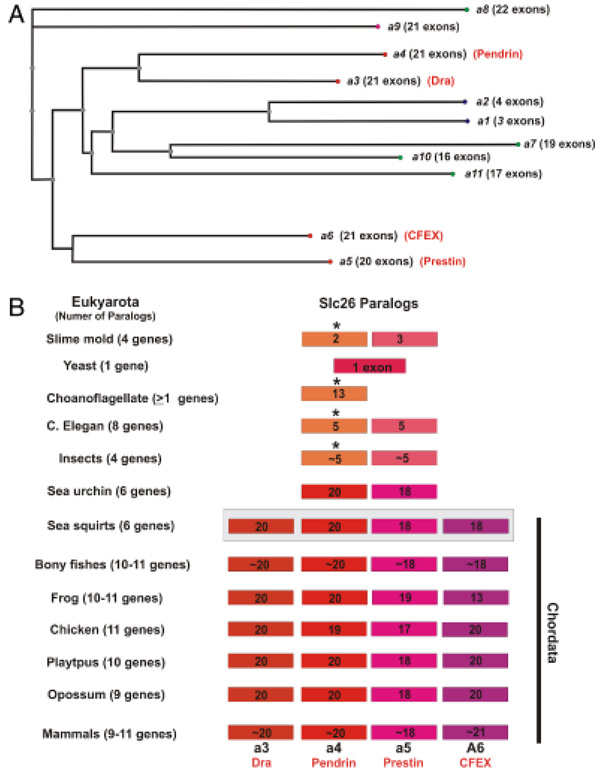Fig. 1.
Evolution of the SLC26A paralogs as revealed by mouse protein comparisons. (A) The relationship of the paralogous SLC26A proteins from the nonredundant protein sequence database from Mmusc is depicted. A distance tree was determined using the fast minimum evolution algorithm of BLAST pairwise alignments with a maximum sequence difference of 0.75. Members of the SLC26A4/5 (red dot) and SLC26A1/11 (blue and green dots) subfamilies are indicated. Aliases for SLC26A3–6 members are provided. (B) The evolutionary expansion of the SLC26A4/5 paralogs is illustrated with the number of genes represented in each taxon being provided. The difference shades of red and purple indicate a common ancestral precursor. The number of coding exons associated with each gene is provided. The paralogs designated with the asterisk (*) are associated with the permease-like SLCA1/11 subfamily. The taxa within the chordate are demarcated. The paralogs of the sea squirt (Cinte), as indicated by the gray box, have a high-sequence homology among themselves making precise identification of the orthologous genes difficult. There are no linkage associations to assist in the ortholog assignments.

